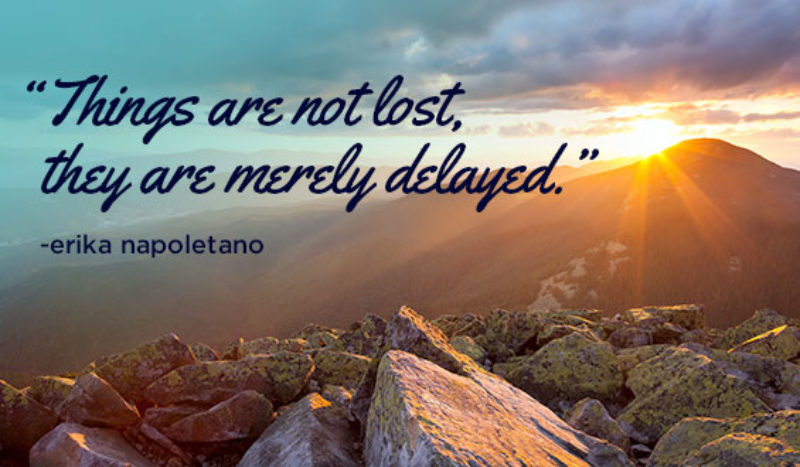You’re at your desk, working hard at a proposal that you absolutely must attach to an email and send before lunch. Your headphones are in, your head is down, your coffee cup is full of lukewarm French roast, and you’re in the zone.
Imagine your colleague Micah taps you on the shoulder and asks you a quick question about billing. You answer it and go back to work.
Then, Frankie slides her chair over to quickly fill you in on the latest status of the company off-site, while asking you to proof copy for her email.
Alright, you can do it, but this is the last interruption because you really need to get back to work. Just as you’re rereading the same sentence for the 8th time, Adam stands behind your monitor and reminds you that you still owe him a draft outline by end of day. But you already know this, because you put a work block on your calendar to get it done.
These interruptions sound overwhelming, right? Can you even imagine interrupting a colleague like this if you obviously see that they’re trying to focus? Absolutely not, only if it was an emergency.
But in a post-pandemic, work-from-anywhere remote (or hybrid) environment, it’s become the norm to always be available. How can you leave work if you aren’t physically leaving the office? If you find yourself closing your laptop at 5pm but checking notifications for Slacks, emails, or calendar invites well into the evening, and then reopening your laptop just to do “one more thing”, you’re not alone.
Research shows remote employees are working longer, spending time in more meetings and having to keep up with more communication channels. Coupled with other potentially huge life changes during the pandemic, like job loss/transition or shifts in family dynamics, if you aren’t setting boundaries to keep it all together, you’re setting yourself up for burnout.
First, take a deep breath. Second, read on to understand what boundaries might look like for you in 2022 so that you can balance your work and personal life. Spoiler alert – you’re going to be just fine.
Take a break, take time off
There is no medal for continuously working through lunch, casually mentioning that you stayed up until 1am to finish a project, or going the longest without a vacation. There is no rule that states how long you have to work each day before you’ve earned a break or how long you have to be at a company before requesting time off. The days of that sort of thinking are done and dusted. What IS at the end of that path is burnout, so please consider rerouting your journey if this is where you’re headed.
A lot of companies offer unlimited vacation days, or something more generous than 2 weeks. Plan these in advance, even if it’s just a day or two. Don’t use them to go to the dentist or the DMV. And don’t use them as a day to get work done without the sometimes constant interruption of meetings, slack and email notifications (the world will not end if you delete work apps from your phone for a day). Really use them to detach and recharge, and maybe even get a little silly.
If you need some ideas, check out our article from last month on filling your own cup. You do not need to earn a break, you do not need to earn rest, you do not need to feel guilty for taking time off. All you need to do is set up an “out of office”, and block your calendar.
Just around the block
Or better yet, have your colleagues “ad-just” around the blocks. Your calendar blocks. The foundation of a good daily calendar are literal, actual blocks of time that you have reserved for yourself to do the things that matter to you and help you perform at your best.
You also don’t need to include every detail on what you’re using that block of time for. If you have an afternoon therapy appointment or lunch with a friend, you can be “OOO”. If you like an hour after large meetings to debrief and map out next steps for yourself, add “Focus Time”.
That time is sacred. Let your team and colleagues know that they should attempt to first work around it. Please note that sometimes, including too many details around why you’ve blocked your calendar may lead the booker to decide if that time can be interrupted. This is why communication with your team is important, and mutual respect for each other’s schedule is a must.
Consider how you feel about different levels of transparency and also what’s normal for your company culture, then come up with a game plan that works for you. Pro-tip: these blocks can be recurring. They can be monthly, weekly, or daily. Additionally, consider blocking times outside of the typical 9-5 workday, especially with remote or hybrid work settings. I have dinner and spend time with my kids daily from 5:30-8pm. For me, that time is off-limits. What blocks of time do you want to start to set aside for yourself?
Now you’ve seen me, now you don’t
There is nothing more tiring than a day of back-to-back virtual meetings AND having to be on camera for all of them. Between backgrounds, pets, people forgetting to mute, and literally just staring at yourself, it’s distracting.
If you need a break, it’s acceptable and perfectly fine to turn your camera off and do audio-only. You might feel like you always have to put on an upbeat demeanor when the camera is on, and that can be exhausting.
Personally, if I’m not leading or speaking during a meeting, or just listening in, my camera will be off.
Assess the ask
Is everything urgent? No. Here are some habits you can stop, like, immediately –
- Responding to an email as soon as you receive it
- Responding to a slack as soon as you receive it
- Attending every meeting you are invited to
- Attending a meeting but responding to slacks and emails in the background
You can learn more on how to say “no” to requests here, but the focus right now is to ensure that when a request comes your way, it is as fleshed out as possible.
You might have to be the change you want to see with this boundary, and it could also take some time for it to stick with your colleagues if it isn’t something they are in the habit of doing.
For example, instead of:
“Hey, you got a minute? I have a question about the meeting we had earlier.”
Try something like:
“Hey, this isn’t urgent, but if you could get back to me by EOD today, I would really appreciate it. In today’s budget meeting, Kathy mentioned you had approved marketing to increase spending on print ads. I don’t see this line item in the spreadsheet, can you let me know if it needs to be included? I’m linking the spreadsheet I’m referencing below, and I’ve granted you access. Let me know if you have any questions.”
Complete thoughts not only give the reader a complete picture of what you’re asking, it saves time by cutting down on the back and forth messaging that is a common side effect of remote/hybrid work environments. Asking this of your colleagues is an important boundary to set.
You might have to give a few gentle reminders, but you can easily do this by replying:
- When do you need this completed by?
- Is there any additional context you can add that would help me complete it?
- Are there documents that you can share that would provide additional context?
- Is this part of a bigger initiative? Who is going to see it?
- What is this for?
The idea here is that when you do set aside time to respond to slack and email requests, you have the complete request upfront so that you can immediately execute it, and not spend additional time collecting all the important pieces of information.
Not setting boundaries will leave you stretched too thin and pulled in too many directions at once. Think of these boundaries as parameters for you to work within that will allow you to perform at your best. And when you’re doing your best work, everyone wins, including you.


